Much of the charm of the historic centre of Seville (and, it has to be admitted, many of its inconveniences) lies in its networks of narrow streets and little squares, and after the main monuments have been seen striking out into the back streets in exploration mode, not knowing exactly what you might find, or how to get back to your apartment, is one of the city’s great pleasures.

The Avenida from the Ayuntamiento with the Adriatico on the right
There is, however, one outstanding exception to this rule. The Avenida de la Constitución, which runs from the Ayuntamiento (town hall), past the front of the Cathedral and Archivos, to the Plaza Puerta Jerez, is almost every inch a modern European style boulevard; wide, traffic free and tree-lined, with the terraces of pavement cafés strung intermittently along it and transportation provided by sleek modern trams that glide quietly back and forth, with the occasional clang of the bell to warn an inattentive pedestrian of their presence.

Arquillo Mañara – entrance to the Moorish Alcázar
But only almost every inch. One of the fascinations of this stretch of road is the surprisingly harmonious combination of styles of different cultures and times, from the Torre Abd El Aziz (early 12th century), through the Cathedral (15th century) to a number of important early 20th century buildings.
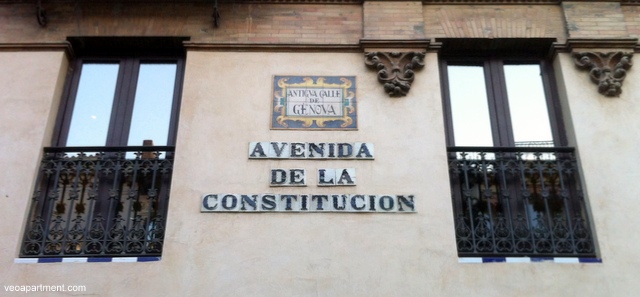
Old and New
The modern name is in honour of the Spanish Constitution of 1980, but prior to that its different sections were known by a number of other names, including Genovese (as attested by a small plaque near Starbucks), after the Genoese merchants settled there by Ferdinand III after the Christian conquest, las Gradas (the steps in front of the Cathedral), Libertad (during the Second Republic) and Queipo de Llano (during the Franco era).
Despite its centrality and importance in the modern city, this area remained outside the city walls throughout the Roman, Vizigothic and Moorish Caliphate periods, and a secondary arm of the river ran from where the Ayuntamiento stands today, along the course of the Avenida, before returning to the main river in El Arenal. It was by this means that the Viking longboat, discovered under the Plaza Nueva, reached its final resting place during the raid of 844 AD. From the early 12th century the site of the Cathedral and the area in front of it were enclosed by a new wall, with exit gates near the later Plaza San Francisco at one end, and near the Cabildo at the other. At the same time the Alcazar enclosure was extended to the Torre Abd El Aziz, the Miguel Mañara arch being the gate to the palace compound.
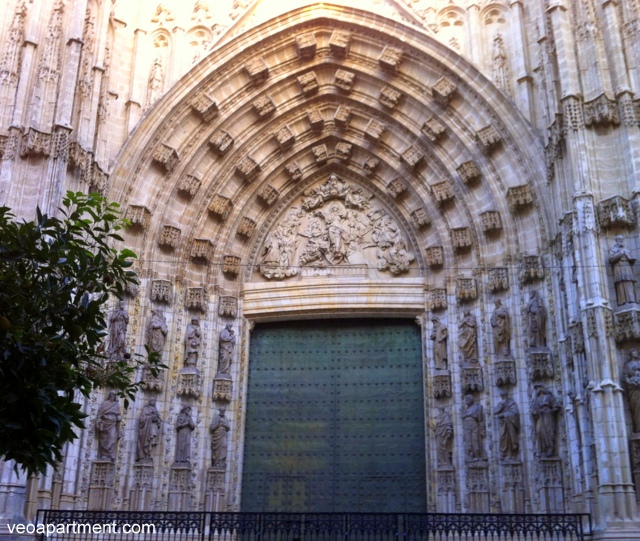
Main entrance of the Cathedral
The second half of the century saw the building of the Grand Mosque, and further extension of the city wall towards the river. From 1401 work began on the demolition of the Mosque and the building of the new Cathedral, completed in 1526, and the largest Gothic cathedral in the world. A large section of the frontage is actually a separate church, the El Sagrario, built in the 17th century in the baroque style.
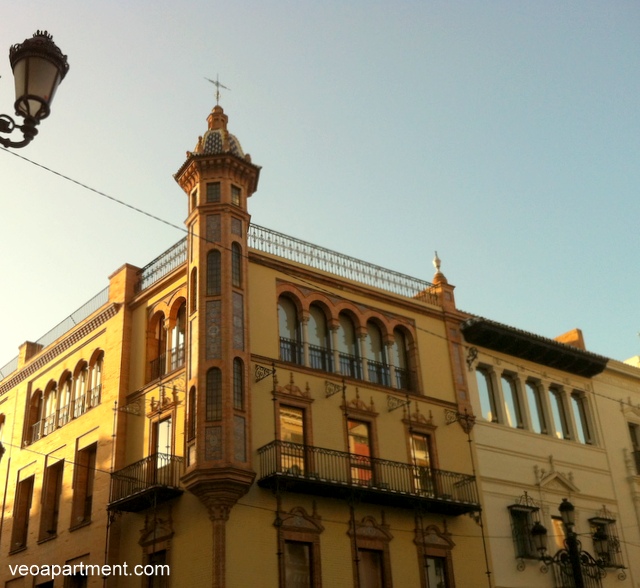
Casa Alvaro Davila in the early evening light
The Avenida in its modern form was created in the first third of the 20th century, as part of the preparations for the 1929 Spanish American exhibition. The northern end was substantially widened, and the fine buildings along this section all date to this time, including the emblematic Adriatico (the circular building facing the town hall), and the Casa Álvaro Dávila (now a bank) on the corner of Garcia Vinuesa. The southern end, between the Archivos and the Puerta Jerez, did not exist at all until the 1920s, the area being occupied by the Convent of Saint Thomas and the University of Saint Mary of Jesus, of which only the chapel remains. Most notable of the buildings on this newly created section is the Coliseo, now government offices, but originally a cinema and theatre. The ticket windows can still be seen in the facade. Pedestrianisation and the installation of the tramway came in 2007, together with new orange trees, ornamental streetlamps and a cycle path, and the absence of traffic has helped to convert the Avenida into a pleasant and interesting place to stroll.
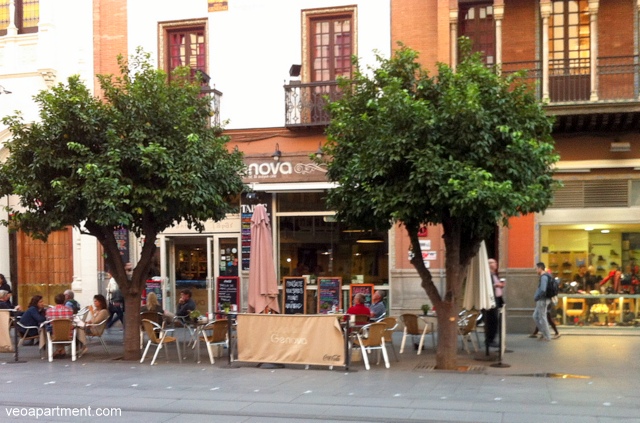
Café Life
This has also resulted in something of an explosion in the number of bars and cafés, mostly aimed at the tourist trade. Best places to stop for a coffee and a snack are the Horno San Buenaventura and Genova cafe-bar, and just off the main drag is one of my favourite traditional tapas bars, Casa Morales.
From the Plaza San Francisco to the main entrance of the Cathedral is the official “carrera” or processional way, for the city’s big religious festivals, especially Semana Santa (Holy Week), and at these times the avenue is lined with seating and thronged with people. It’s a great spectacle, but normal life does come to something of a halt. At Christmas it’s strung with lights along its entire length, and the annual Bélen (Bethlehem) Fair is held in the street between the Cathedral and the Archives.
Booking an apartment in this area of the city is surprisingly easy, and veoapartment has a wide variety from studios to larger family apartments.
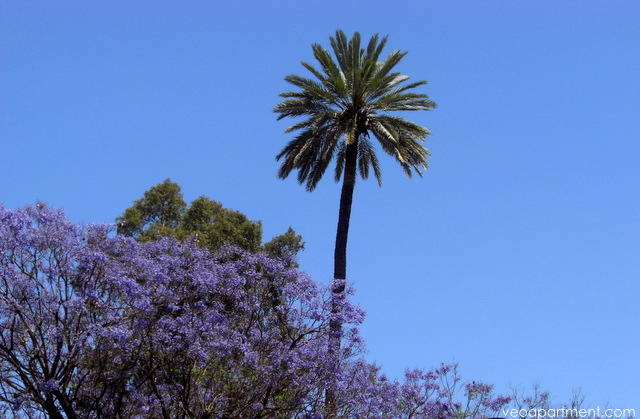 jacaranda trees in blossom
jacaranda trees in blossom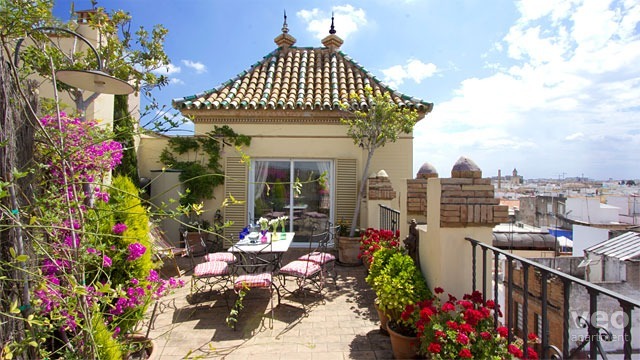 flowering plants on sunny Macarena Terrace
flowering plants on sunny Macarena Terrace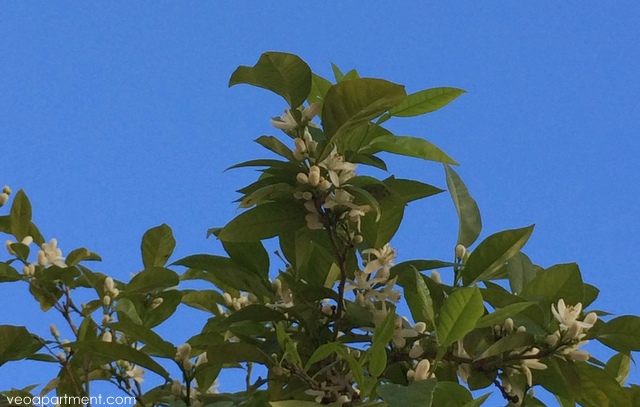 azahar – aka orange blossom
azahar – aka orange blossom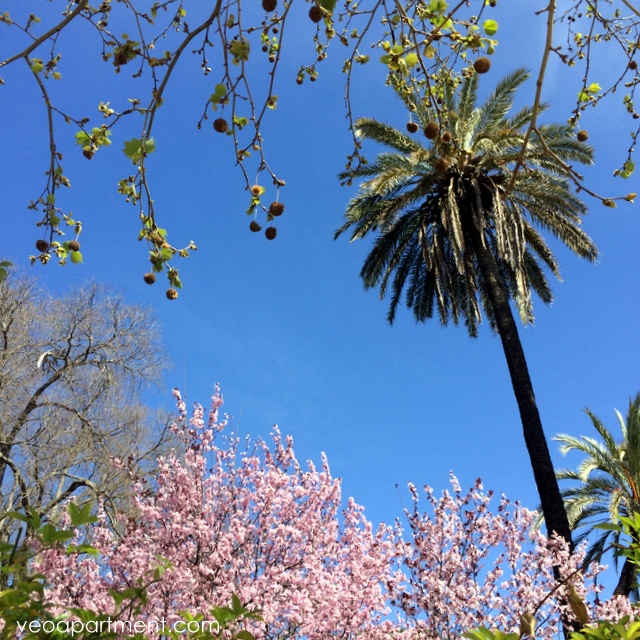 almond blossoms in Maris Luisa Park
almond blossoms in Maris Luisa Park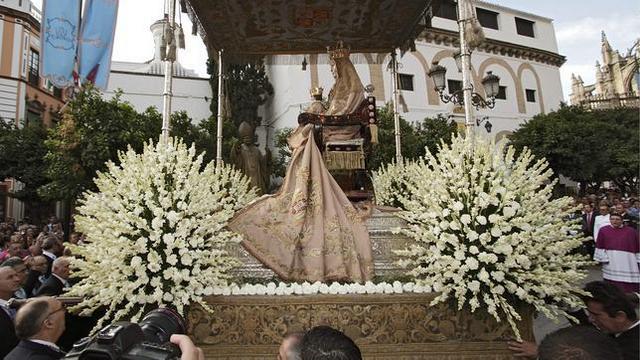 flower-festooned procession float – photo courtesy of
flower-festooned procession float – photo courtesy of 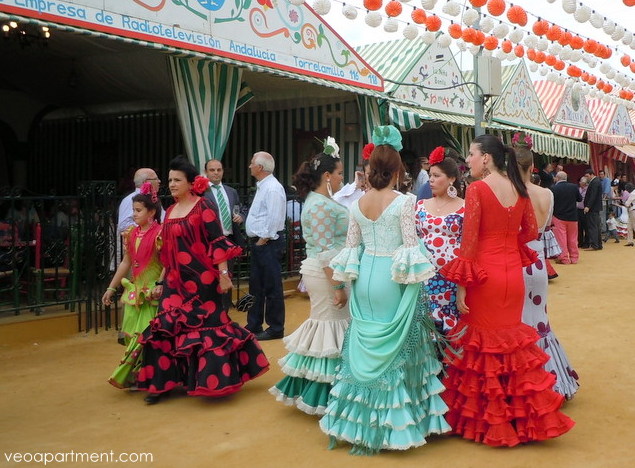 women at the Seville fair with “flowers” in their hair
women at the Seville fair with “flowers” in their hair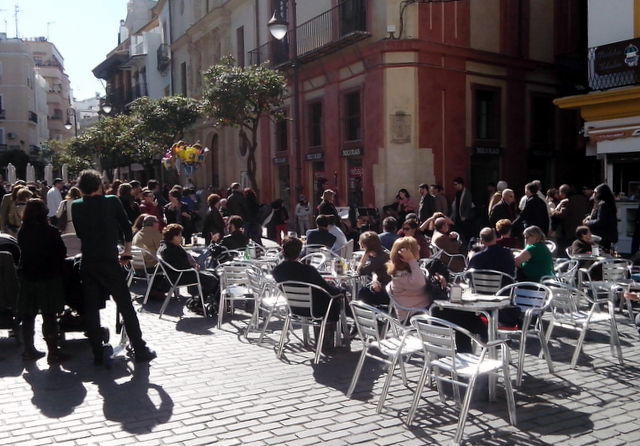 street life in Seville
street life in Seville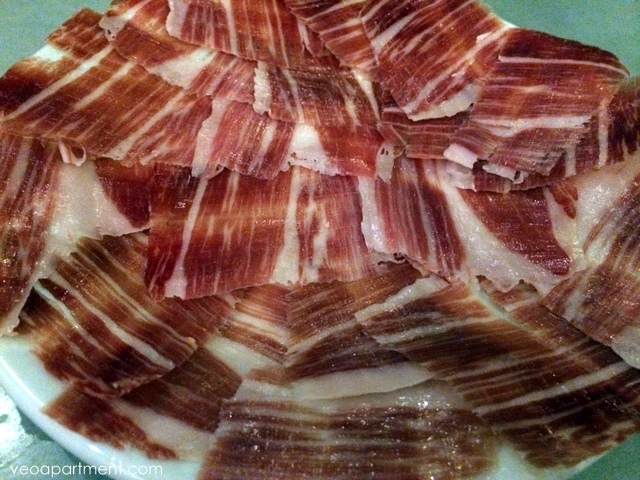 jamón Ibérico de Bellota
jamón Ibérico de Bellota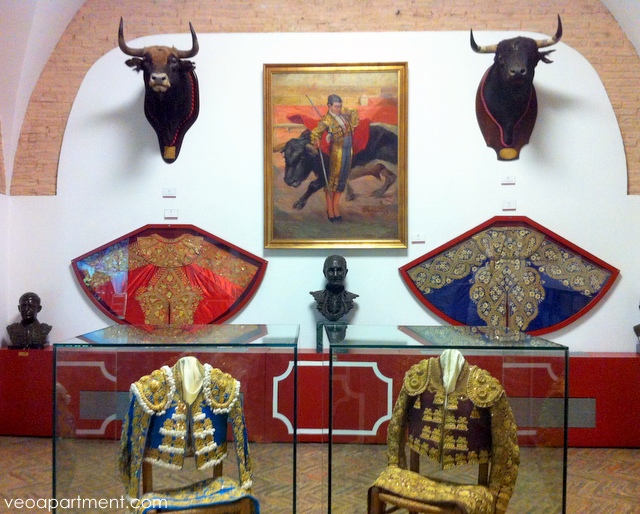 Bullfighting
Bullfighting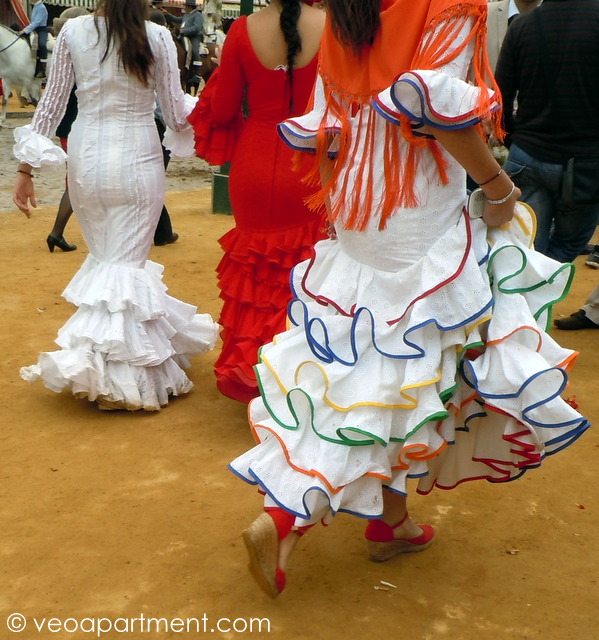
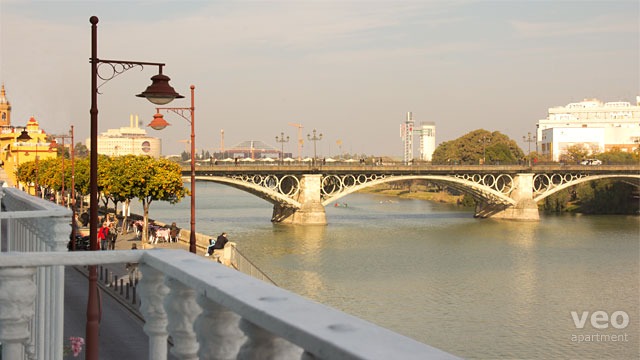 view from our Betis Blue apartment
view from our Betis Blue apartment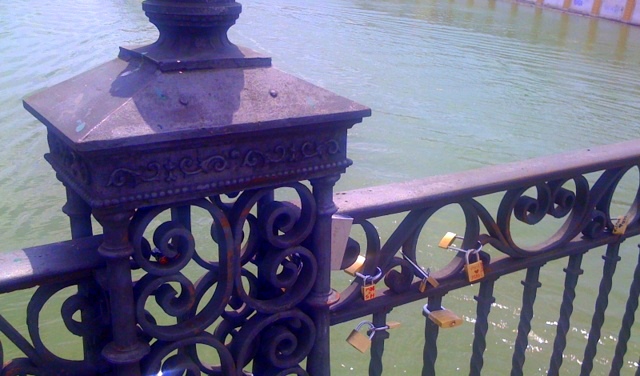 lover’s locks on the Isabel bridge
lover’s locks on the Isabel bridge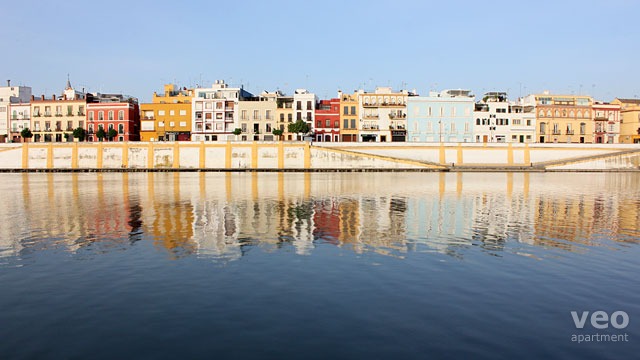 view of Triana from the Seville side of the river
view of Triana from the Seville side of the river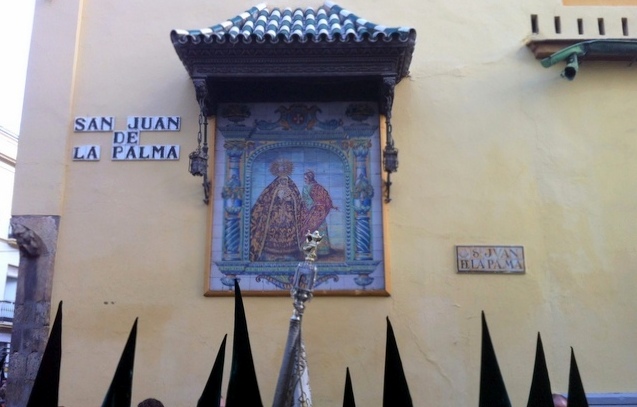 the Macarena procession in Seville
the Macarena procession in Seville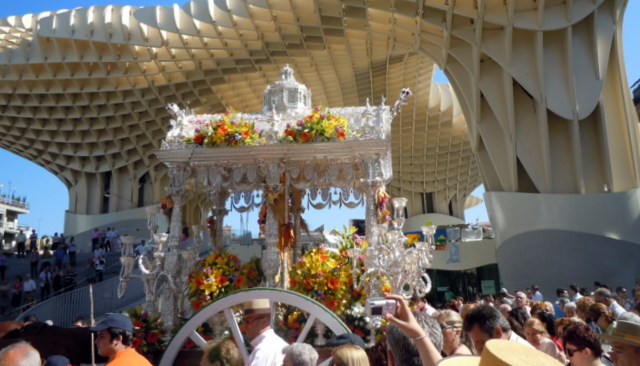 the Seville brotherhood leaving for El Rocio
the Seville brotherhood leaving for El Rocio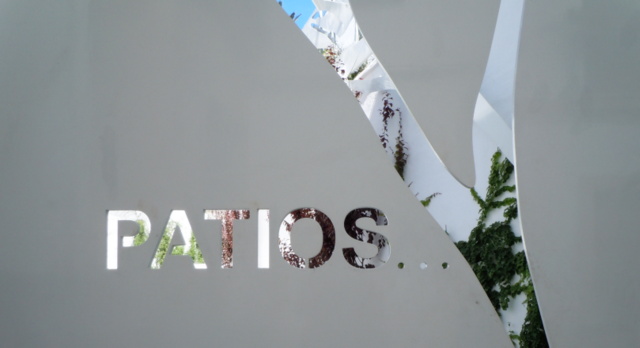 the Patios of Cordoba
the Patios of Cordoba